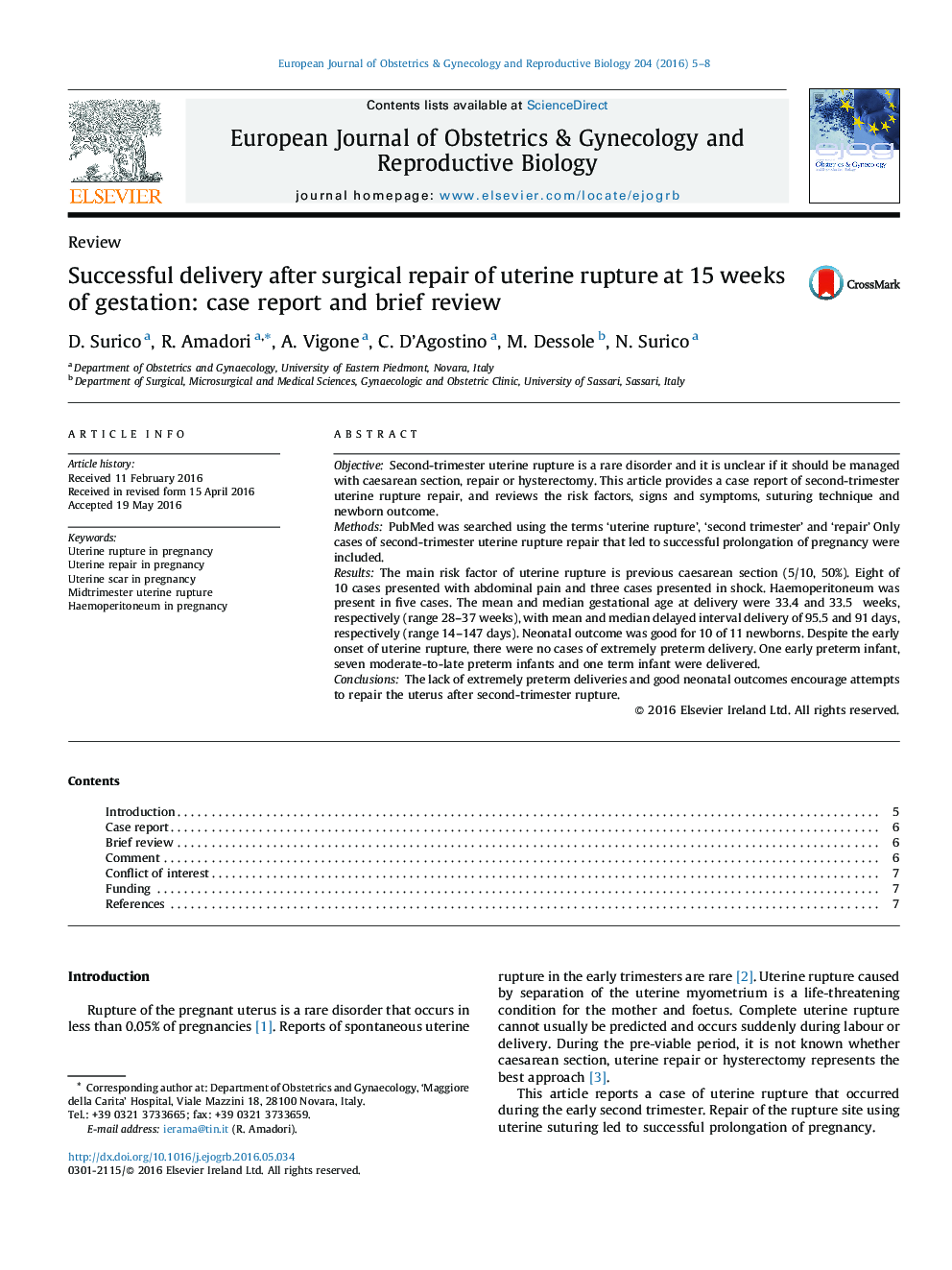| Article ID | Journal | Published Year | Pages | File Type |
|---|---|---|---|---|
| 3919262 | European Journal of Obstetrics & Gynecology and Reproductive Biology | 2016 | 4 Pages |
ObjectiveSecond-trimester uterine rupture is a rare disorder and it is unclear if it should be managed with caesarean section, repair or hysterectomy. This article provides a case report of second-trimester uterine rupture repair, and reviews the risk factors, signs and symptoms, suturing technique and newborn outcome.MethodsPubMed was searched using the terms ‘uterine rupture’, ‘second trimester’ and ‘repair’ Only cases of second-trimester uterine rupture repair that led to successful prolongation of pregnancy were included.ResultsThe main risk factor of uterine rupture is previous caesarean section (5/10, 50%). Eight of 10 cases presented with abdominal pain and three cases presented in shock. Haemoperitoneum was present in five cases. The mean and median gestational age at delivery were 33.4 and 33.5 weeks, respectively (range 28–37 weeks), with mean and median delayed interval delivery of 95.5 and 91 days, respectively (range 14–147 days). Neonatal outcome was good for 10 of 11 newborns. Despite the early onset of uterine rupture, there were no cases of extremely preterm delivery. One early preterm infant, seven moderate-to-late preterm infants and one term infant were delivered.ConclusionsThe lack of extremely preterm deliveries and good neonatal outcomes encourage attempts to repair the uterus after second-trimester rupture.
